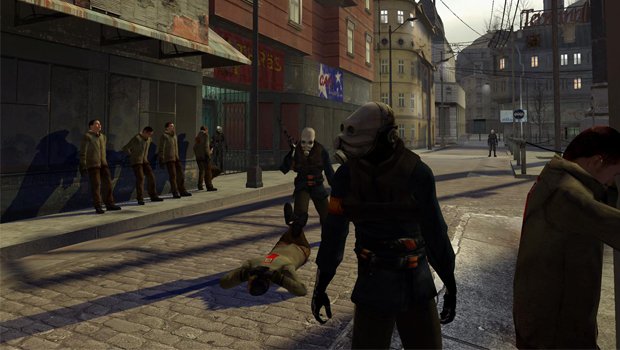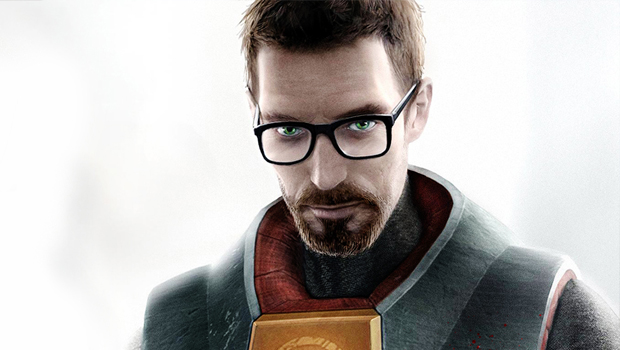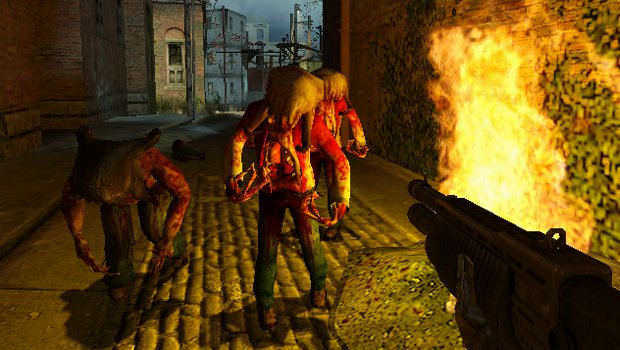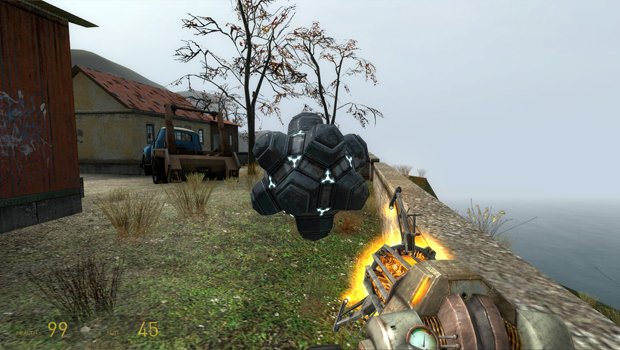Why Half-Life 2 is still the greatest FPS ever made, 10 years on
A decade after Half-Life 2’s release, the masses are still obsessed with the release date/announcement/vaguest hint of existence of its currently-nebulous sequel. This is no mere case of fans chasing down leaks, scouring LinkedIn profiles, and hanging on the odd hint dropped in a developer interview. The search for Half-Life 3 is more akin to the actions of the heavily grieving bereaved. A single-minded focus on a missing loved one, leading to dreams, obsessions, and the chasing of imagined ghosts.
There hasn’t been a single solid statement about the existence, form, or schedule of a new Half-Life game since H-L2’s second add-on episode vanished into the kicked-up dust of that cliffhanger just over seven years ago. So why the loyalty? Why the fervent belief, the need for Half-Life 3 to be real? It’s simple. Half-Life 2 is still the greatest FPS ever made.

I say this not with nostalgia, or spurred on by a curmudgeonly knee-jerk against the smoky linearity of the modern military shooter (in truth, a dominant genre now only in the minds of those still affronted by its last-gen ubiquity). No. You see while Half-Life 2 undeniably laid the foundations for a staggering proportion of the then-future of game design - genre be damned – it is no mere historically lauded precursor. It’s no aged benefactor, thanked yearly at the annual commemoration ceremony before being shuffled off back to the care home. The fact is that Half-Life 2 still executes its concepts, conceits and mechanics more effectively, deftly, and powerfully than almost any of its imitators have in the 10 years since. That’s why it’s still the best, and that’s why I’m still playing it.
There’s something obviously different about Half-Life 2 from the opening moments. There’s no expository cutscene. No lengthy ‘In a time of war…’ cinematic, detailing a bombastic tale of humanity’s fall in lurid detail. There’s just an unsettlingly alien normality. City 17’s railway station might be defaced by the brutal deco surrealism of Combine technology, but in every other sense it’s a familiar place.
And for all of the escalating inter-dimensional fascism on show, its stranger elements are made all the more dangerously mundane by the populace’s broken-down acceptance of them. Eschewing dramatic ‘Bad men are bad’ set-pieces and other such blunt attempts to convey traumatic drama, it’s in the hushed whispers, the defeated grumbles of the everyday people around you, that the completeness of Half-Life 2’s darkness really speaks.

I very deliberately say “you” rather than “Gordon” there, because that’s the genius stroke that really amplifies City 17’s palpable realness. Unlike in most action games, you’re not playing the hero character. The hero character is playing you. His dearth of dialogue not a failing of narrative, but rather a deliberately hollowed conduit through which the player threads their own persona into Half-Life 2’s hostile world, Gordon is a container for the player’s experiences, reactions, and internalised responses.
It’s about more than letting the player fill in the gaps. Unlike the original Half-Life, which casts the player as an established Gordon in a world he knows, the sequel avoids any such player/character disconnection by having the experience and knowledge of one directly mirror that of the other throughout. In fact, pushed forward through time and space by at least 10 years and a good few miles, Gordon’s initial bamboozled shock and awe doesn’t just reflect the player’s lack of comprehension. It is the player’s lack of comprehension. But that’s just the start. Through Half-Life 2, Valve insightfully, invisibly sculpts the player a mould in which to pour their own unconscious character development.
Weekly digests, tales from the communities you love, and more
Using the classical Hero's Journey model (the underpinning structure of every adventure story and fairytale you've ever read), Half-Life 2’s set-pieces, story developments and action-escalation are a carefully structured set of trials and learning experiences – as emotional as they are mechanical - which develop the player/Gordon from isolated outsider to accepted but over-faced rebel, to proto-warrior; to leader; to borderline messiah.

The initial oppression and bullying of the railway station. The first frantic, skin-of-the-teeth gunfight-cum-chase through the city streets. The delayed revenge of that first big victory over a Combine gunship. The initial bonding with a new ‘family’, before it’s all snatched away. The bleak, lonely, nightmare trial-by-Ravenholme, which forces a rapid rallying of both nerves and ingenuity before allowing its new hero to (literally and figuratively) step back into the light, stronger and more learned.
The quiet, reflective pilgrimage through the open wilderness of Highway 17. The taming of Antlions providing the first, feral hint of leadership. The assault on the prison stronghold which stamps Freeman’s mark on the world with a righteous fury. The return to City 17, changed, empowered, and now a leader of men.
Many game developers talk about empowerment. Most of them deliver it via the gratuitous, quick-fix badassery of big guns and bigger explosions. Half-Life 2 understands that real, affecting narrative empowerment is about a long-term journey, and peerlessly delivers every beat that matters.

And crucially, its core gameplay (as spirally free-form and eclectic as it is), ensures that every detail of its intricate percussion is played out exactly to the player’s own tune. The persistent ability to carry 10 wildly different weapons certainly doesn’t play into modern gaming’s penchant for gun-switching, two-at-a-time ‘realism’, but it does guarantee something more important: possibility. No mere variations on a theme, Half-Life 2’s selection of shotguns, machine guns, magnums, crossbows, pulse-rifles, bouncing energy balls, and grenades is a full-spectrum paintbox with which to brush influence on the world.
That, really, is what truly great first-person shooting is all about. Presence, and the ability to change one’s immediate environment through free, creative, expression. Every one of Half-Life 2’s tools works differently. Every single one has different uses, abilities, disadvantages, and nuance. Each, in isolation or combination, will drastically change the action narrative of the immediate moment, setting off a causal chain of controlled chaos-theory that will then lead to the next and the next.
And of course, there’s the gravity gun. A still unequaled tool with which to almost physically reach in and touch the game-world, it gives the experience of inhabiting City 17 a true malleability, a kind of agency and ownership that few shooters since have matched. Almost anything is a weapon. Almost anything is a diversion. Even a car can be bumped out of place to create temporary cover. If you have time and the necessary technique, you can take said vehicle for a walk down the road, threatening to crush all in your path.

And it all ties by to freedom, presence, expression and causality. You might be able to shotgun through a room full of Combine, but what if you wrenched that toilet off the wall and took them all down with one piece of weaponised porcelain? How will the movement required to grab it affect the next few seconds of the unfolding battle? How much will the saved ammo affect things later down the line if you’re successful? How much will the complicated set-up hamper you if you aren’t? But more importantly than any of this, how much more of a personal statement will such an attack be, and how much more detail will it write into your story, however it turns out?
Fundamentally. Half-Life 2 understands that it’s all about you. Your story, your experience, filled with your details, your personality, your anecdotes, your victories. That’s why there are no cutscenes to show you the developers’ version of what’s going on. That’s why there’s no third-person Gordon model to remind you that he doesn’t look like you. That’s why there are no prescribed approaches to set pieces, and why Half-Life 2’s most fundamental signature weapon is not a BFG or a cerebral bore, but a simple, wonderful machine whose only function is to let you do whatever you want with its world.
And its because of that philosophy, in all the forms it takes, that Half-Life 2 is still the best FPS ever made.



